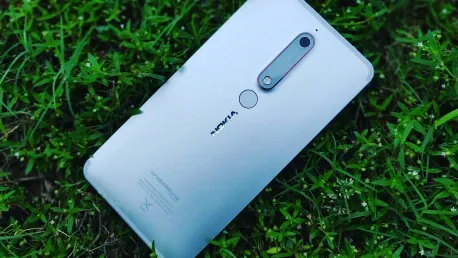With Justin Hotard recently stepping into the role of CEO and president of Nokia, the seasoned executive brings with him the formidable task of guiding the tech giant through a period of significant evolution. Boasting substantial experience from his tenure at Intel, Hotard succeeds Pekka Lundmark, who previously led a notable turnaround for Nokia but amid fluctuating revenues and intense competition, left the company at a critical junction. Hotard’s leadership presents a potential game-changer for the company, leveraging his expertise to foster both growth and stability.
Embracing AI While Respecting Traditions
The cornerstone of Hotard’s vision for Nokia revolves around striking a balance between harnessing artificial intelligence (AI) to propel the company into future horizons and maintaining its longstanding strengths in mobile and fixed networks. This dual strategy aims to ensure Nokia remains a key player in its core market segments while capitalizing on the burgeoning AI opportunities. Hotard’s background in Intel’s Data Centre and AI Group positions him favorably to lead Nokia’s AI initiatives. His tenure at Intel endowed him with valuable insights and a forward-thinking approach, essential for steering Nokia through its transformation.
Hotard’s approach is driven by a respect for Nokia’s legacy while simultaneously pushing the envelope in AI innovation. This strategy encompasses maximizing the company’s robust assets and technological capabilities. He aims to ensure a seamless integration of cutting-edge AI technologies with traditional business operations, reflecting a quest for harmonized growth. The goal is not only to exploit new opportunities in AI and data centers but to ensure that Nokia’s foundational sectors, such as mobile and fixed networks, continue to thrive and evolve. With his deep understanding of AI, Hotard is set to navigate the complexities of modernizing existing systems while spearheading new tech ventures.
The Legacy of Pekka Lundmark
Pekka Lundmark’s nearly five-year tenure at Nokia marked a period of significant transformation, characterized by both commendable strides and persistent challenges. Under Lundmark, Nokia saw a rejuvenation effort that sought to address various operational and strategic deficiencies. Despite these efforts, the company grappled with fluctuating revenues and an underwhelming share price. One of the notable setbacks during Lundmark’s leadership was the loss of crucial contracts, including the substantial $14 billion open RAN deal with AT&T, a coup for competitor Ericsson.
Hotard steps into this scenario with the expectation to build upon the groundwork laid by his predecessor. The mandate is clear: to pursue consistent growth and improved profitability. His commitment to human development, customer service, and delivering substantial shareholder returns signals a holistic approach to taking Nokia forward. Hotard’s vision encompasses not just operational excellence but also a strategic emphasis on fostering a culture of innovation and responsiveness to market dynamics.
Navigating Geopolitical Tensions
A significant challenge in Hotard’s new role involves steering Nokia’s operations through a landscape fraught with geopolitical tensions, particularly amid ongoing trade frictions between Europe and the US. As an American leading a Finnish multinational, Hotard faces the intricate task of managing tariff regulations and safeguarding business interests across varied political landscapes. These geopolitical dynamics necessitate a nuanced approach to maintaining and expanding market presence in key regions.
Geopolitical tensions, however, also present potential opportunities for Nokia. The European Commission’s push for greater tech sovereignty and security could play in Nokia’s favor, particularly with the growing momentum to remove Huawei from the market. This shift could potentially open new doors for Nokia in the European telecom sector, providing a strategic edge over competitors. Hotard’s leadership will be vital in navigating these complexities, ensuring that Nokia not only mitigates risks but also seizes emerging opportunities in the geopolitical sphere.
Positioning in the 5G Market
The competitive 5G market stands as a crucial battleground for Nokia, where it vies against formidable players like Ericsson and Chinese tech giants. Hotard’s strategy must prioritize maximizing revenues from traditional segments such as mobile and fixed networks while also capturing a competitive edge in emerging markets. Ensuring Nokia’s robustness in these established sectors provides a solid foundation for the company’s broader strategic goals.
The expansion into data centers and defense markets under Hotard’s leadership is key for maintaining sustained growth. As Ian Fogg of CCS Insight emphasizes, Nokia must stay competitive in its legacy industries while proactively exploring opportunities in new technological sectors. This dual focus ensures that Nokia leverages its existing strengths while positioning itself as a frontrunner in burgeoning fields like AI and data centers, which are anticipated to drive future growth.
Diversification and Strategic Initiatives
Diversifying Nokia’s business portfolio is central to Hotard’s strategy, with significant emphasis on sectors like data centers, defense, private wireless, and industrial edge markets. According to Paolo Pescatore from PP Foresight, focusing on these areas aligns well with Hotard’s vision and is critical for Nokia’s sustained growth. This diversification strategy seeks to build on Nokia’s core competencies while extending its reach into complementary markets, thus enhancing the company’s overall market position.
Such strategic initiatives are designed to bolster Nokia’s technology offerings, capitalizing on its strengths in connectivity solutions. This diversified approach not only mitigates risks associated with over-reliance on a single market but also fosters resilience against market volatilities. By targeting sectors that complement its existing operations, Nokia under Hotard’s leadership aims to craft a balanced growth trajectory, ensuring the company remains adaptive and forward-looking.
Addressing Market Dynamics and Future Prospects
Justin Hotard, having recently taken on the role of CEO and president at Nokia, faces the formidable task of steering the tech giant through a critical period of transformation. Hotard brings substantial expertise from his time at Intel, where he honed the skills necessary to navigate such challenges. He steps into the role succeeding Pekka Lundmark, who managed to stage a notable turnaround for Nokia amid fluctuating revenues and intense market competition. However, Lundmark left the company at a pivotal moment, making Hotard’s leadership particularly crucial. Hotard’s appointment represents a potential game-changer for Nokia, as he is expected to leverage his extensive experience to drive growth and ensure stability. With the tech industry rapidly evolving, Hotard’s depth of knowledge and strategic vision may prove invaluable. The challenges are significant, but with Hotard at the helm, there is cautious optimism that Nokia can consolidate its market position and embark on a path of sustained progress.









